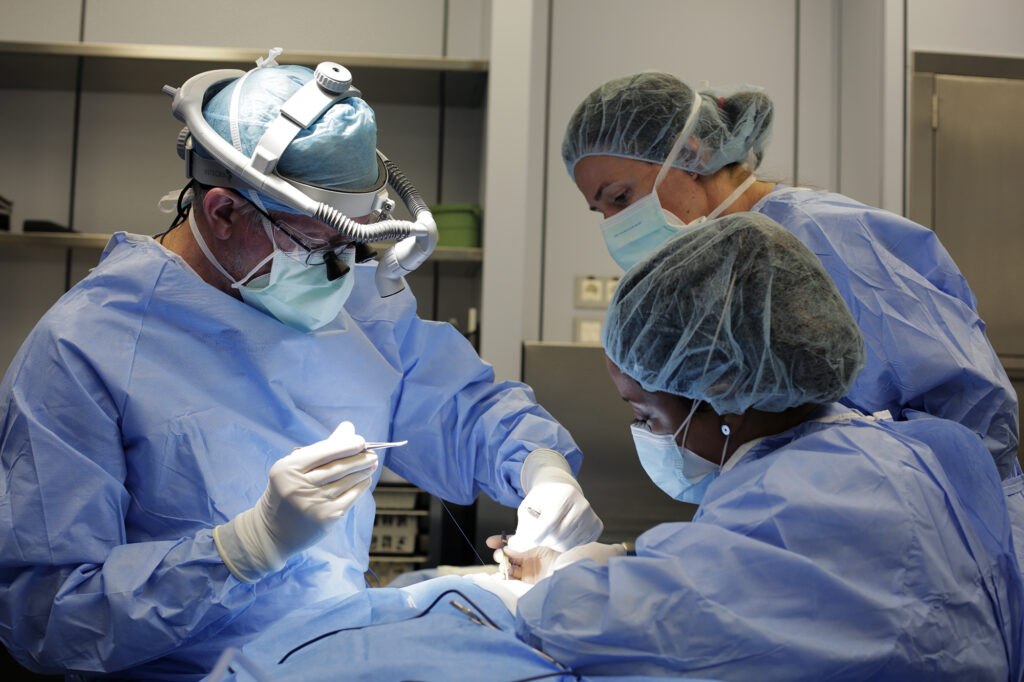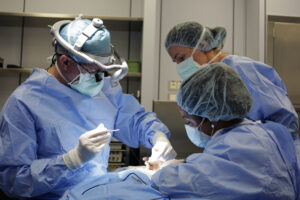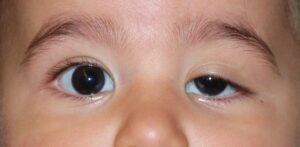Treatments
Ptosis surgery for children

What does ptosis surgery for children involve?
Ptosis surgery for children is an operation that is performed to solve the drooping of one or both top eyelids over the eye, a problem that sometimes occurs from birth.
The operation might be performed for aesthetic or functional reasons because, if the eyelid droops then it completely or partially covers the pupil, and vision is made notably worse. This hinders correct visual development in childhood and might have long-term consequences, such as lazy eye or corneal astigmatism.
Depending on the degree of ptosis, our team of oculoplastic surgeons assess the most suitable time to perform the operation, which can involve different techniques. When the muscle raising the eyelid is elongated, it is simply a case of cutting and tightening it so that it opens fully when the patient blinks. However, if this muscle is not functional, we perform a bypass to the frontalis muscle (responsible for moving the eyebrow) so that it does the work and the child is able to open his or her eyelid properly. The Miranza clinics have experts who are at the forefront of this surgery with no visible incisions and without the need for grafts.
Eye diseases treated
Before scheduling the surgery, we must assess the severity of the congenital ptosis. If it is minor, we generally treat the child with patches or glasses until he or she is a little older before operating. However, if the eyelid has a notable impact on vision, we often perform the ptosis surgery for children at an early age, even before the age of one.
As well as ensuring good visual development, this operation also prevents the child from developing neck pain and problems from repeatedly turning his or her head, lifting his or her chin, or tilting his or her head back to see properly. The aesthetic improvement achieved with the surgery also helps prevent psychosocial problems at school age.
Recovery
Ptosis surgery for children is performed under general anaesthesia so that the child does not move, and is not scared or nervous in the operating theatre. After ensuring good recovery from the anaesthesia, the child can go home the same day as the surgery without any need for hospitalisation.
The child might initially have problems closing his or her eye properly due to post-operative swelling. This is quite normal and is solved with eye drops and lubricants until the child is able to blink normally. Our ophthalmologists will also indicate the antibiotics and anti-inflammatories to be applied to reduce the swelling and avoid post-operative infection.


